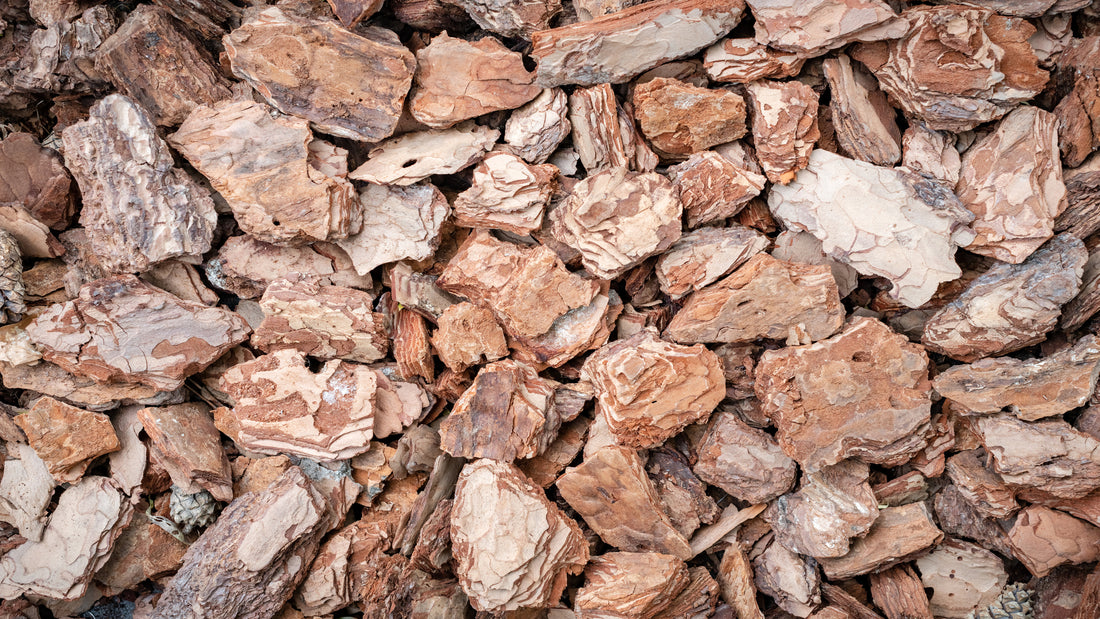Pine bark is often used in gardens as a mulch, whether to add a decorative touch to the space or even to prevent the growth of weeds.
But can I also use pine bark on indoor plants? We leave you with some considerations on this topic.
1. Decor
One of the reasons why pine bark and other mulches are used in gardens is to add a decorative touch to the space. For your indoor plants, you may also want to add that touch to the surface of your pots, so we recommend that you choose a suitable potting soil cover for your greenery at home.
Pine bark, from a decorative point of view, can be suitable, particularly if you want to add a more country look to your space. It may, however, have the disadvantage that the pieces of bark are too large for most of your pots if they are smaller plants.
Alternatively, you can use our SOIL TOPPER natural mulch, especially suitable for indoor plants, made from 100% cork. In addition to achieving a natural touch for your home decor, it is ideal for any size pot, as the granulate is small and easy to apply.
2. Weed control
The second reason pine bark and other soil covers are used in outdoor gardens is to allow better control of weeds. These plants not only create an undesirable aesthetic effect in gardens, but they also compete with plants placed for the intended landscaping purpose.
Inside our homes this problem does not exist, since being in a controlled environment, the probability of a seed from these weedy plants being deposited and taking root in the potting soil of our plants is very low.
3. Moisture retention
One of the benefits of adding mulch to our indoor plants is that we can prolong the moisture of their potting soil. It is particularly important to use mulches in these situations:
- In summer, when temperatures are high and air humidity is very low;
- In plants potted directly in non-waterproofed terracotta pots, as in these cases, the evaporation of irrigation water is higher than in plastic pots;
- In plants that like to have constant humidity levels in the potting soil, as is the case with ferns and calatheas, for example.
Pine bark can be beneficial in these situations, but if your house is very humid, or you have your plants in places with little light and predominantly potted in plastic pots, you should check whether the potting soil dries out between waterings.
Remember that most indoor plants like wet/dry soil cycles. Pine bark tends to remain moist for long periods of time, and may not allow these cycles to happen, being harmful in situations of high humidity and low light and ventilation.
Alternatively, you can use our SOIL TOPPER natural mulch. Cork is an excellent temperature regulator and being a waterproof material, it does not absorb moisture, making it an excellent mulch for indoor plants, even throughout the year, and for any type of plant. It preserves its humidity, whilst ensuring convenient aeration.
4. Acidification of the potting soil
A final consideration concerns the possible acidification of the soil when using pine bark. Prolonged use of this mulch can lower the pH of the soil and consequently the survival of beneficial microorganisms. It is known that most indoor plants prefer slightly acidic potting soils, but it is important to ensure that the pH remains suitable for each type of plant.
Our SOIL TOPPER natural mulch is an excellent alternative! As it is an inert material, it will not interfere with the pH of our indoor plants' potting soil, nor with all the beneficial organisms that are part of its organic structure.




